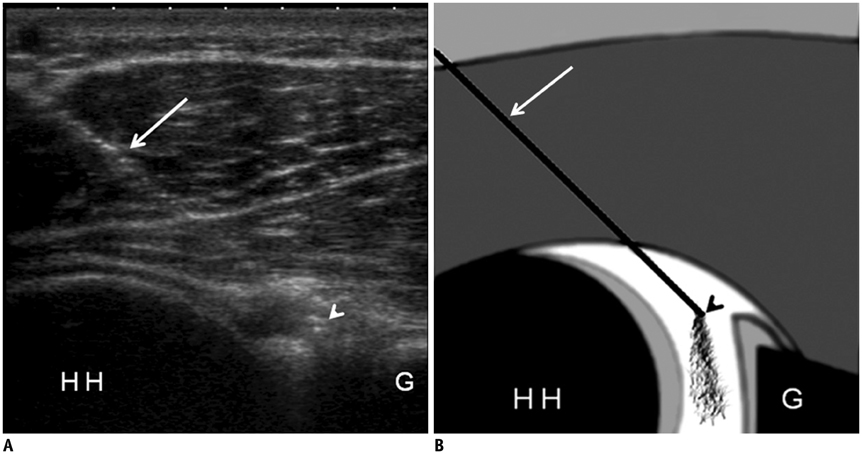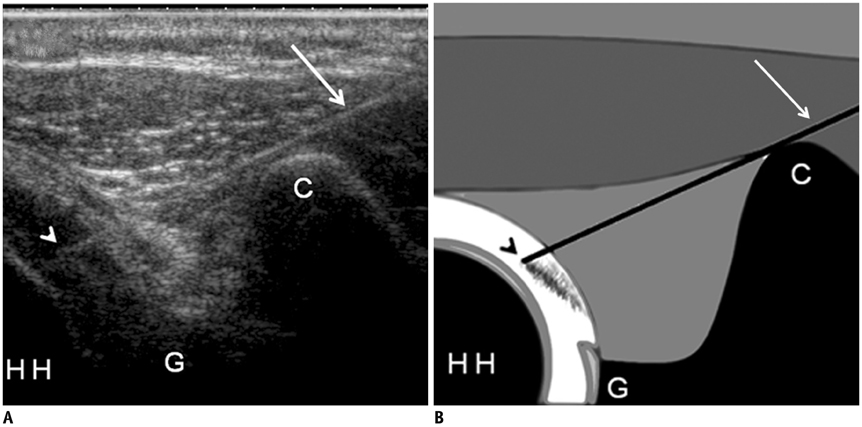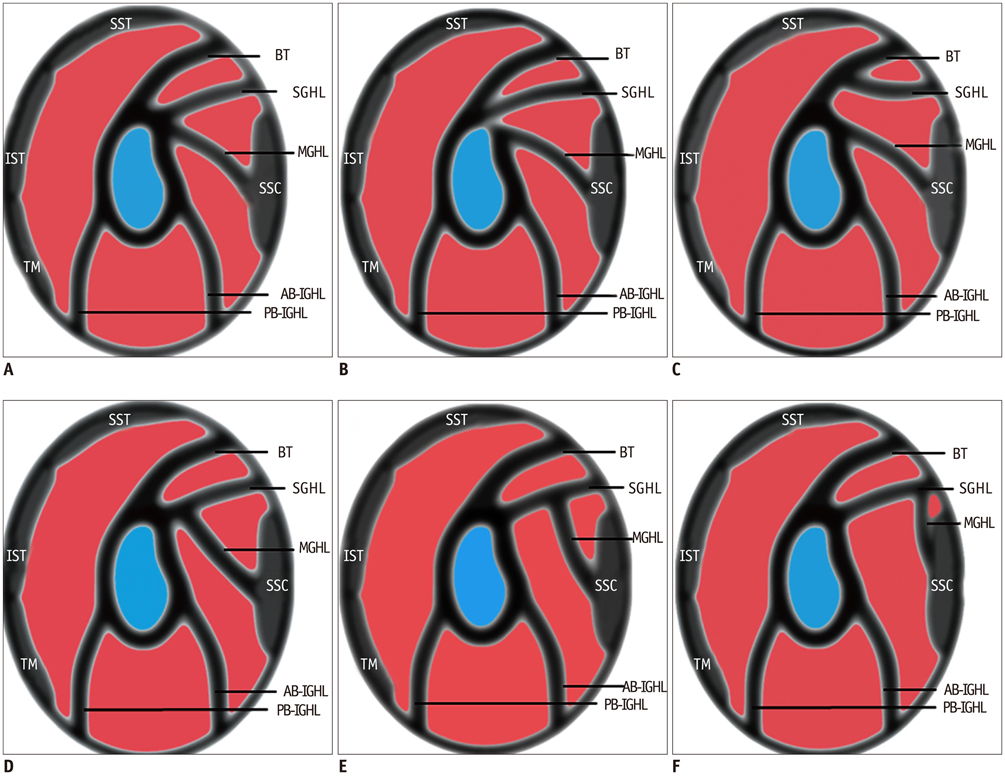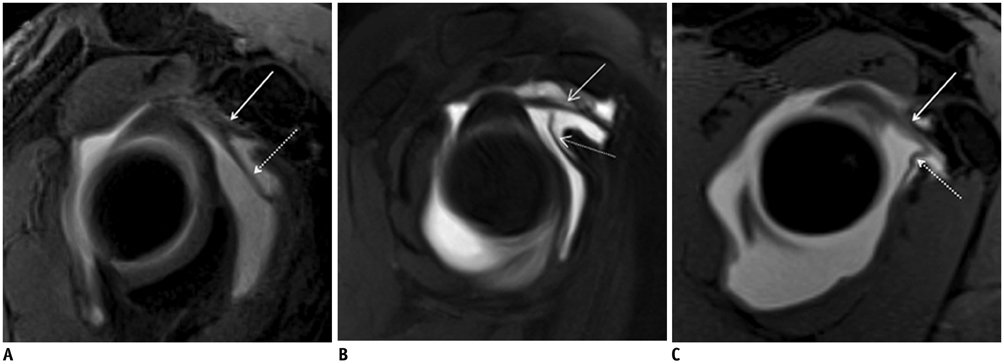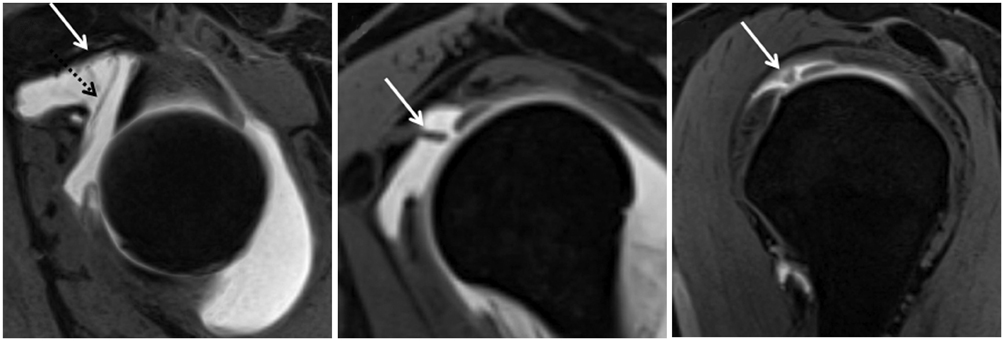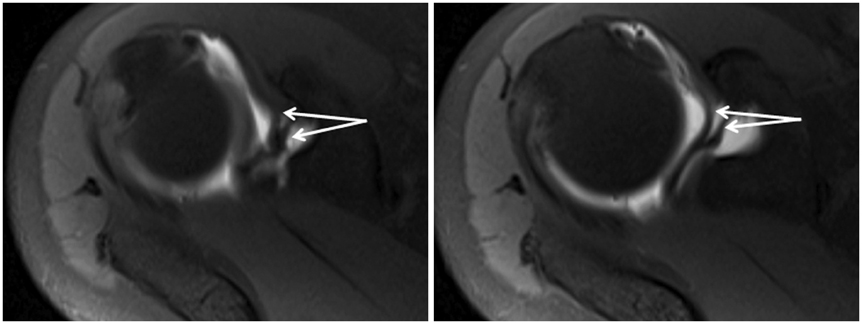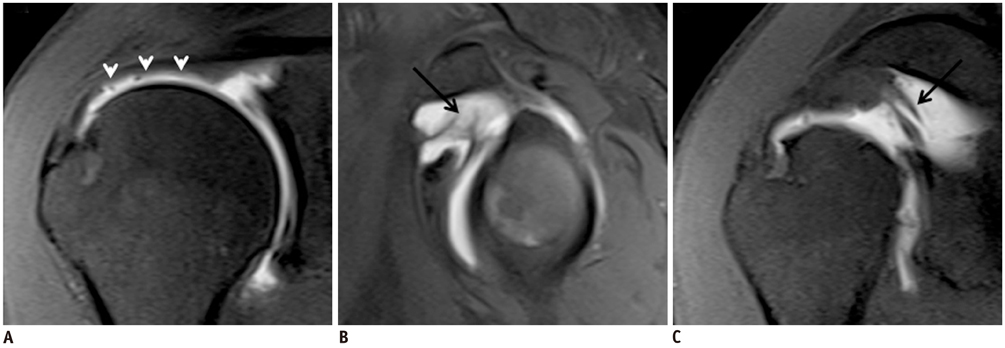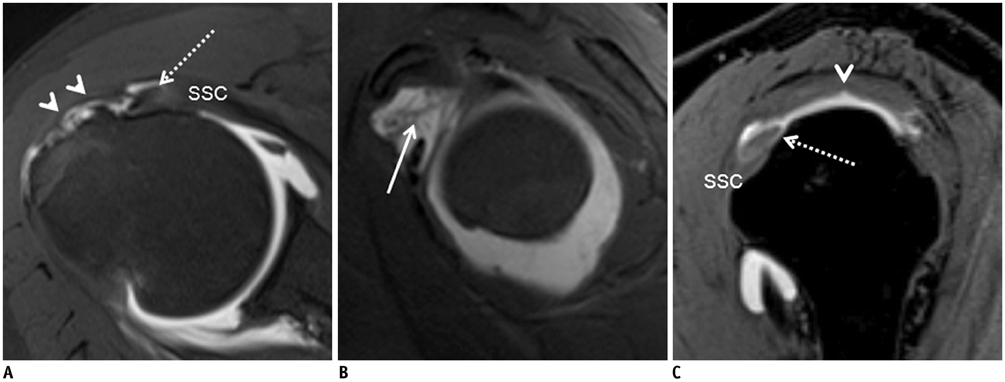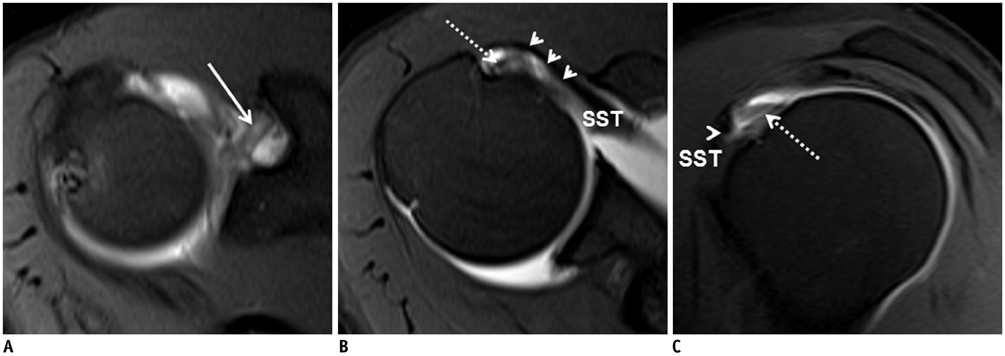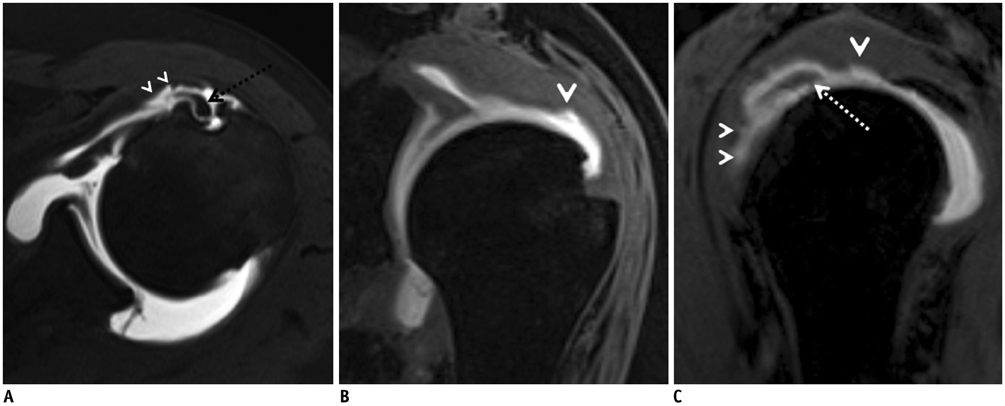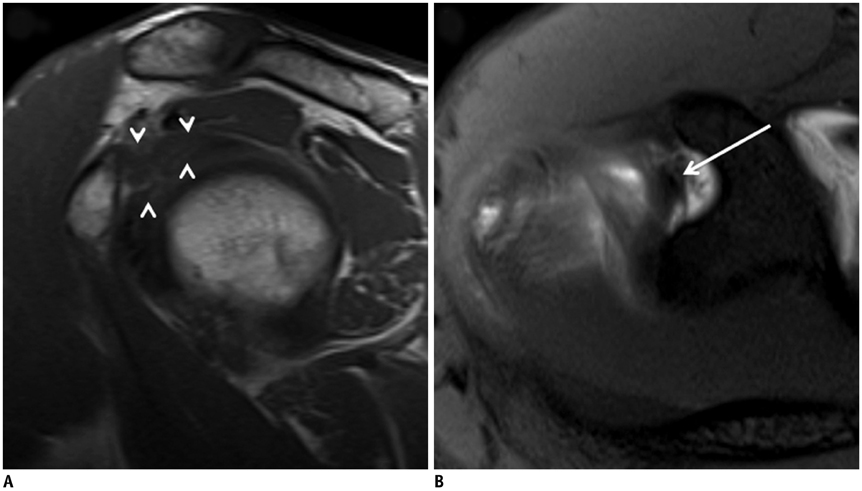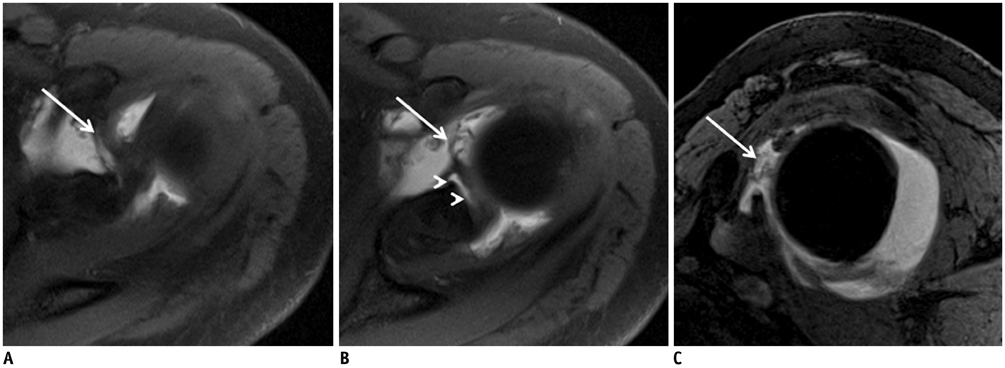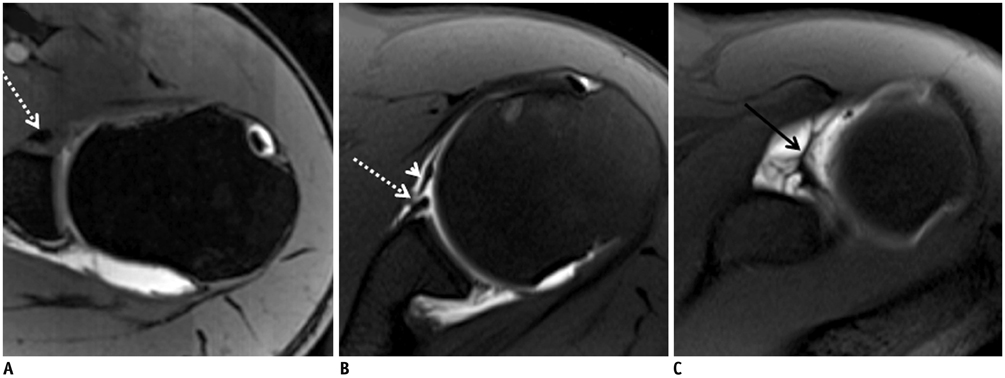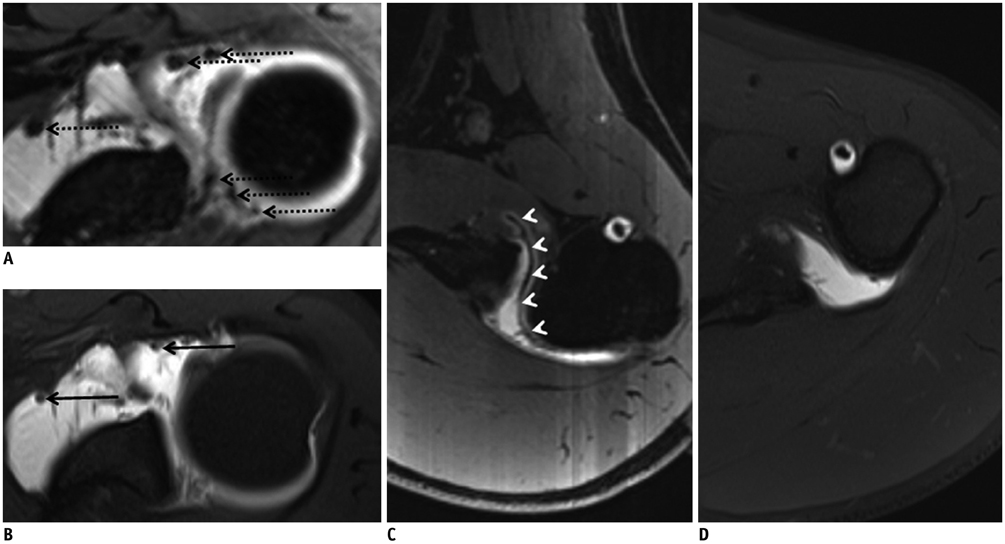Korean J Radiol.
2014 Aug;15(4):508-522. 10.3348/kjr.2014.15.4.508.
Anatomy, Variants, and Pathologies of the Superior Glenohumeral Ligament: Magnetic Resonance Imaging with Three-Dimensional Volumetric Interpolated Breath-Hold Examination Sequence and Conventional Magnetic Resonance Arthrography
- Affiliations
-
- 1Department of Radiology, Medical Faculty, Ataturk University, Erzurum 25090, Turkey. drhogul@gmail.com
- 2Department of Orthopedic, Medical Faculty, Ataturk University, Erzurum 25090, Turkey.
- KMID: 1731056
- DOI: http://doi.org/10.3348/kjr.2014.15.4.508
Abstract
- The purpose of this review was to demonstrate magnetic resonance (MR) arthrography findings of anatomy, variants, and pathologic conditions of the superior glenohumeral ligament (SGHL). This review also demonstrates the applicability of a new MR arthrography sequence in the anterosuperior portion of the glenohumeral joint. The SGHL is a very important anatomical structure in the rotator interval that is responsible for stabilizing the long head of the biceps tendon. Therefore, a torn SGHL can result in pain and instability. Observation of the SGHL is difficult when using conventional MR imaging, because the ligament may be poorly visualized. Shoulder MR arthrography is the most accurately established imaging technique for identifying pathologies of the SGHL and associated structures. The use of three dimensional (3D) volumetric interpolated breath-hold examination (VIBE) sequences produces thinner image slices and enables a higher in-plane resolution than conventional MR arthrography sequences. Therefore, shoulder MR arthrography using 3D VIBE sequences may contribute to evaluating of the smaller intraarticular structures such as the SGHL.
Keyword
MeSH Terms
Figure
Reference
-
1. Bencardino JT, Beltran J. MR imaging of the glenohumeral ligaments. Magn Reson Imaging Clin N Am. 2004; 12:11–24. v2. Yang C, Goto A, Sahara W, Yoshikawa H, Sugamoto K. In vivo three-dimensional evaluation of the functional length of glenohumeral ligaments. Clin Biomech (Bristol, Avon). 2010; 25:137–141.3. Robinson G, Ho Y, Finlay K, Friedman L, Harish S. Normal anatomy and common labral lesions at MR arthrography of the shoulder. Clin Radiol. 2006; 61:805–821.4. Cooper DE, O'Brien SJ, Warren RF. Supporting layers of the glenohumeral joint. An anatomic study. Clin Orthop Relat Res. 1993; (289):144–155.5. Pouliart N, Somers K, Eid S, Gagey O. Variations in the superior capsuloligamentous complex and description of a new ligament. J Shoulder Elbow Surg. 2007; 16:821–836.6. Ogul H, Bayraktutan U, Yildirim OS, Suma S, Ozgokce M, Okur A, et al. Magnetic Resonance Arthrography of the Glenohumeral Joint: Ultrasonography-Guided Technique Using a Posterior Approach. Eurasian J Med. 2012; 44:73–78.7. Zwar RB, Read JW, Noakes JB. Sonographically guided glenohumeral joint injection. AJR Am J Roentgenol. 2004; 183:48–50.8. Souza PM, Aguiar RO, Marchiori E, Bardoe SA. Arthrography of the shoulder: a modified ultrasound guided technique of joint injection at the rotator interval. Eur J Radiol. 2010; 74:e29–e32.9. Yeh L, Kwak S, Kim YS, Pedowitz R, Trudell D, Muhle C, et al. Anterior labroligamentous structures of the glenohumeral joint: correlation of MR arthrography and anatomic dissection in cadavers. AJR Am J Roentgenol. 1998; 171:1229–1236.10. Flannigan B, Kursunoglu-Brahme S, Snyder S, Karzel R, Del Pizzo W, Resnick D. MR arthrography of the shoulder: comparison with conventional MR imaging. AJR Am J Roentgenol. 1990; 155:829–832.11. Kaplan PA, Bryans KC, Davick JP, Otte M, Stinson WW, Dussault RG. MR imaging of the normal shoulder: variants and pitfalls. Radiology. 1992; 184:519–524.12. Chung CB, Dwek JR, Cho GJ, Lektrakul N, Trudell D, Resnick D. Rotator cuff interval: evaluation with MR imaging and MR arthrography of the shoulder in 32 cadavers. J Comput Assist Tomogr. 2000; 24:738–743.13. Nakata W, Katou S, Fujita A, Nakata M, Lefor AT, Sugimoto H. Biceps pulley: normal anatomy and associated lesions at MR arthrography. Radiographics. 2011; 31:791–810.14. De Maeseneer M, Van Roy F, Lenchik L, Shahabpour M, Jacobson J, Ryu KN, et al. CT and MR arthrography of the normal and pathologic anterosuperior labrum and labral-bicipital complex. Radiographics. 2000; 20 Spec No:S67–S81.15. De Maeseneer M, Van Roy P, Shahabpour M. Normal MR imaging anatomy of the rotator cuff tendons, glenoid fossa, labrum, and ligaments of the shoulder. Radiol Clin North Am. 2006; 44:479–487. vii16. Dunham KS, Bencardino JT, Rokito AS. Anatomic variants and pitfalls of the labrum, glenoid cartilage, and glenohumeral ligaments. Magn Reson Imaging Clin N Am. 2012; 20:213–228. x17. Petchprapa CN, Beltran LS, Jazrawi LM, Kwon YW, Babb JS, Recht MP. The rotator interval: a review of anatomy, function, and normal and abnormal MRI appearance. AJR Am J Roentgenol. 2010; 195:567–576.18. Yu D, Turmezei TD, Kerslake RW. FIESTA: an MR arthrography celebration of shoulder joint anatomy, variants, and their mimics. Clin Anat. 2013; 26:213–227.19. Shankman S, Bencardino J, Beltran J. Glenohumeral instability: evaluation using MR arthrography of the shoulder. Skeletal Radiol. 1999; 28:365–382.20. Kask K, Põldoja E, Lont T, Norit R, Merila M, Busch LC, et al. Anatomy of the superior glenohumeral ligament. J Shoulder Elbow Surg. 2010; 19:908–916.21. Chandnani VP, Gagliardi JA, Murnane TG, Bradley YC, DeBerardino TA, Spaeth J, et al. Glenohumeral ligaments and shoulder capsular mechanism: evaluation with MR arthrography. Radiology. 1995; 196:27–32.22. Beltran J, Rosenberg ZS, Chandnani VP, Cuomo F, Beltran S, Rokito A. Glenohumeral instability: evaluation with MR arthrography. Radiographics. 1997; 17:657–673.23. Weishaupt D, Zanetti M, Tanner A, Gerber C, Hodler J. Lesions of the reflection pulley of the long biceps tendon. MR arthrographic findings. Invest Radiol. 1999; 34:463–469.24. Habermeyer P, Magosch P, Pritsch M, Scheibel MT, Lichtenberg S. Anterosuperior impingement of the shoulder as a result of pulley lesions: a prospective arthroscopic study. J Shoulder Elbow Surg. 2004; 13:5–12.25. Braun S, Horan MP, Elser F, Millett PJ. Lesions of the biceps pulley. Am J Sports Med. 2011; 39:790–795.26. Cooper DE, O'Brien SJ, Arnoczky SP, Warren RF. The structure and function of the coracohumeral ligament: an anatomic and microscopic study. J Shoulder Elbow Surg. 1993; 2:70–77.27. Werner A, Mueller T, Boehm D, Gohlke F. The stabilizing sling for the long head of the biceps tendon in the rotator cuff interval. A histoanatomic study. Am J Sports Med. 2000; 28:28–31.28. Schaeffeler C, Waldt S, Holzapfel K, Kirchhoff C, Jungmann PM, Wolf P, et al. Lesions of the biceps pulley: diagnostic accuracy of MR arthrography of the shoulder and evaluation of previously described and new diagnostic signs. Radiology. 2012; 264:504–513.29. Gaskill TR, Braun S, Millett PJ. Multimedia article. The rotator interval: pathology and management. Arthroscopy. 2011; 27:556–567.30. Baumann B, Genning K, Böhm D, Rolf O, Gohlke F. Arthroscopic prevalence of pulley lesions in 1007 consecutive patients. J Shoulder Elbow Surg. 2008; 17:14–20.31. Walch G, Nove-Josserand L, Levigne C, Renaud E. Tears of the supraspinatus tendon associated with "hidden" lesions of the rotator interval. J Shoulder Elbow Surg. 1994; 3:353–360.32. Bennett WF. Subscapularis, medial, and lateral head coracohumeral ligament insertion anatomy. Arthroscopic appearance and incidence of "hidden" rotator interval lesions. Arthroscopy. 2001; 17:173–180.33. Gerber C, Sebesta A. Impingement of the deep surface of the subscapularis tendon and the reflection pulley on the anterosuperior glenoid rim: a preliminary report. J Shoulder Elbow Surg. 2000; 9:483–490.34. Snyder SJ, Karzel RP, Del Pizzo W, Ferkel RD, Friedman MJ. SLAP lesions of the shoulder. Arthroscopy. 1990; 6:274–279.35. Hodler J. Technical errors in MR arthrography. Skeletal Radiol. 2008; 37:9–18.36. Gückel C, Nidecker A. The rope ladder: an uncommon artifact and potential pitfall in MR arthrography of the shoulder. AJR Am J Roentgenol. 1997; 168:947–950.
- Full Text Links
- Actions
-
Cited
- CITED
-
- Close
- Share
- Similar articles
-
- Magnetic Resonance Arthrography in the evaluation of Anterior Glenohumeral Instability
- Comparison of Non-Breath-Hold T2-weighted Turbo Spin-Echo and Three Breath-Hold T2-weighted MR Images for Detection of Focal Hepatic Lesion
- Ankle Ligaments: Comparison of MR Arthrography with Conventional MR Imaging in Amputated Feet
- Advanced Methods in Dynamic Contrast Enhanced Arterial Phase Imaging of the Liver
- Contrast-Enhanced Three-Dimensional MR Imaging Using a Volumetric Interpolated Breath-hold Examination (VIBE): Clinical Utility in the Evaluation of Renal Tumors

